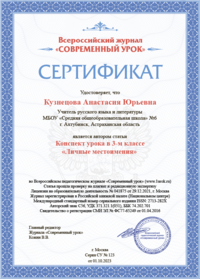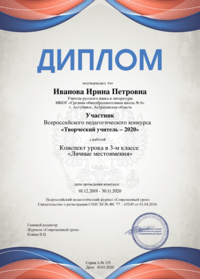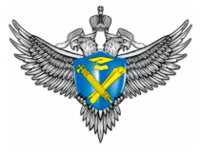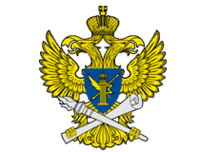Методическая разработка урока на тему «Здоровье. Нервная система человека» «Health. The nervous System»
Автор: Зайцева Тамара Владимировна
Организация: МБОУ «Бичурская СОШ №1»
Населенный пункт: Республика Бурятия, с.Бичура
Современный подход к уроку английского языка требует привлечения новых подходов, которые будут способствовать повышению мотивации к изучению иностранного языка в условиях новых требований. Основная задача при обучении иностранному языку это научить учащихся анализировать, синтезировать и применять изученный лексико-грамматический материал. Необходимо, чтобы каждый ученик на уроке участвовал в процессе обучения, сотрудничая с одноклассниками. Для этого процесс обучения должен быть захватывающий, но в тоже время, требующий концентрации внимания, мобилизации знаний. Очень эффективно использовать соревновательный подход на любом этапе изучения иностранного языка. Рассмотрим такой урок на примере темы «Здоровье/ Нервная система человека» / «Health/ The nervous System».
Урок на тему «Health. The nervous System».
Цель урока: Создание условий для самореализации и самосовершенствования при формировании у уч-ся практических умений в чтении, письменной речи и говорении.
Задачи:
- Развивать навыки чтения (поисковое, детальное)
- Совершенствовать произносительные навыки.
- Способствовать употреблению лексических единиц в ситуации «The nervous System».
- Развивать навык межличностного общения между учащимися.
- Развивать логическую и языковую догадку, зрительную память.
Речевой материал: слова и выражения, описывающие структуру нервной системы человека.
Speech patterns: the nervous system, brain, spinal cord, cell body, muscles, brain cerebrum, thalamus, cerebellum, brain stem, hypothalamus, pituitary gland.
Оснащение: карточки с заданиями. (Приложение)
Ход занятия:
- Warming-up stage.
Teacher: Good morning! I’m glad to see you again! Sit down please. How are you today?
Good! I’m fine, too. So, today we are going to talk about interesting and unusual topic, but I’ll tell you its name later.
Now, look at the picture. What’s this? Our brain, of course. These are the parts of our brain.
Brain Cerebrum Thalamus
Hypotalamus
Pituitary Gland Cerebellum
Brain Stem
Spinal cord
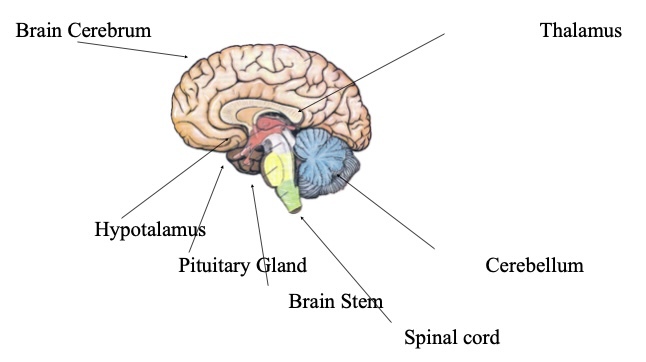
Teacher: Read the words and translate them. Pay attention to these words, they are the key words of our lesson.
II. Reading stage.
Teacher: “The brain” is connected with the topic of our lesson. But to find out the topic I ask you to be divided into 4 groups and do the tasks.
(Пояснения. Учащиеся получают задание № 1. Им необходимо просмотреть текст и посчитать слова, записать их на доске под названиями своих команд. Таким образом, осуществляется просмотровое чтение.)
Teacher: Each group has got the text.
- Count the number of words in the longest sentence. Then write the number on the blackboard.
- Find all verbs.
- Count all the words with letter “m”.
- Find out all the words pointing out to the human’s ability.
|
The brain is very complex organ with many different parts. The biggest part is the cerebrum, responsible for intelligence, memory, personality, emotion, speech and the ability to feel and move. Next is the smaller cerebellum, controlling balance, movement and coordination, and the brain stem. This is responsible for taking in, sending out and coordinating all of the brain’s messages – just like a secretary! It also controls many automatic body functions such as breathing, heart rate and digestion. The thalamus carries messages from the second organs like the eyes, ears, nose and fingers to the cerebrum, and the hypothalamus controls other automatic processes such as body temperature and appetite. Lastly, there is the tiny pituitary gland, which produces and releases hormones to control growth, metabolism, our response to stress, and many other things. |
(Пояснения. Учащимся необходимо вспомнить и восстановить текст. Таким образом, осуществляется изучающее чтение.)
- Good for you! Now give me back the card with the text. I’ll give you another one. Fill in the gaps.
|
The brain is very complex organ with many different parts. The biggest part is the cerebrum, responsible for intelligence, memory, personality, emotion, speech and the ability to feel and move. Next is the smaller cerebellum, controlling balance, movement and coordination, and the brain stem. This is responsible for taking in, sending out and coordinating all of the brain’s messages – just like a secretary! It also controls many automatic body functions such as breathing, heart rate and digestion. The thalamus carries messages from the second organs like the eyes, ears, nose and fingers to the cerebrum, and the hypothalamus controls other automatic processes such as body temperature and appetite. Lastly, there is the tiny pituitary gland, which produces and releases hormones to control growth, metabolism, our response to stress, and many other things. |
- Change the text with another group and check it.
Teacher: Thank you very much. You’ve work hard. But you’ve got one more card.
|
The brain is like the central computer for the nervous system.it receives messages from different parts of the body, and then tells the body how to react. If you touch a hot pan by accident, for example, the nerves in your skin from a message of pain. The message gets passed on through the nerves in the spinal cord to the nerves in the brain. The brain takes this message, translate it, then sends a message back telling the muscles to pull your hand away from the heat. This all happens in less than a second! |
Teacher: Find out three unknown words for your group and write them down on your Answer sheet. Change your Answer sheet with another group. Now write the definition to the unknown words you’ve got. Then find out each word in the text and translate the sentence orally.
Teacher: Good for you! This is the last part of the whole text. Read it and put three parts in the right order.
|
The nervous system is the control centre of the body. It consists of the brain, the spinal cord, which runs from the brain and down through your backbone, and a gigantic network of nerves. |
III. Summing up. Hometask stage.
Teacher: Let’s check. Well done! Give the title to this text. (Students give their ideas.)
I think, “The nervous system” is the best one and it’s the topic of our lesson. What have you learnt about the nervous system? Say the main ideas from each part of the text.
(Пояснения. Работа проходит фронтально. Учащиеся находят главное из каждой части текста. Необходимо, чтобы получился план текста. Можно записать тезисы)
Teacher: So, let’s sum up the results of your work. Everyone was active and creative and worked hard. Now it’s time for your hometask. At home you have to read the text once again and be ready to explain that the nervous system is the most important one for a man. Thank you for the lesson! Good bye!


